Maintaining Rose Gardens in Santa Barbara
Traditional landscaping is captured in the Santa Barbara rose garden
Quintessential and classic, the formal rose garden is a must-have for historic preservation gardens and lovers of the time-honored landscape. Their long bloom period, fragrance, vibrant colors in a wide variety, and the antique nature that provides a throwback to the gardens of earlier times, a rose garden can be established with the right care and upkeep. A professional landscaping company in Santa Barbara knows best how to do this.
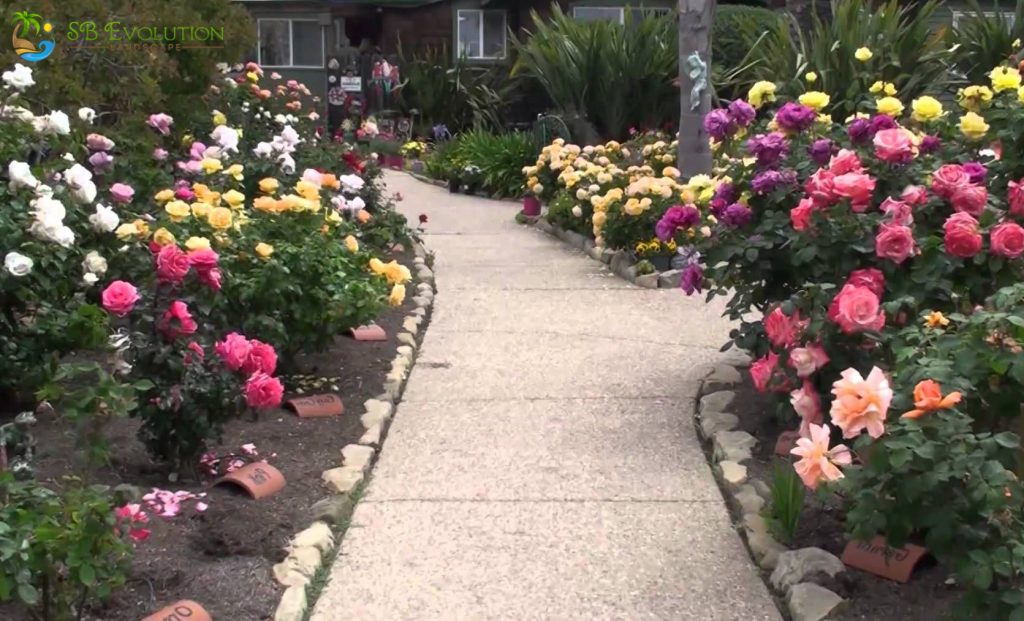
Rose bushes are somewhat of a contradiction in the Santa Barbara landscape. While many varieties are salt tolerant, able to be planted on properties that front beaches or sit just inside the shoreline of the Pacific, roses too prefer seasons–cooler temperatures in the winter and not-so-hot weather in spring and summer. These plants tend to benefit from the ability to go dormant during colder months, storing the energy needed for a successful bloom period come summer.
What is an adequate care program for roses?
A landscaper in Santa Barbara will have the expertise needed to keep a rose garden healthy and vital throughout the year in this region. A proper routine for maintaining roses is essential to their upkeep, but before that can begin, the groundwork, literally, must be laid for a successful rose garden to grow. Proper remediation of compacted, nutrient-depleted soil is a must, in some cases requiring complete replacement with a proper mix of topsoil, compost, and other organic additives. Roses can then be planted an a program for their upkeep can begin:
- Winter: After the first of the year, rose bushes should be pruned back to about half of its current height. Clearing debris such as spent petals and leaves around the roses will help prepare them for the next step: A treatment to prevent weeds followed by a thick layer of composted mulch applied over the entire rose bed will help protect the shrubs for the rest of the colder season. The roses should be watered as needed.
- Spring: The Ides of March bring the first fertilization which should be continued every ninety days until the end of the calendar year. Continue watering and monitor mildew growth; spray a preventative as needed every ten days or so. A spring continues, begin checking for pests common with roses, such as spider mites and aphids. Treat with insecticide as needed.
- Late spring early summer: Blooms should begin appearing by now and so begins the need to deadheading (removal) of spent flowers to encourage continued budding and plant growth. Continue gentle watering at the plants’ bases to ensure proper root hydration.
- Summer: Deadheading continues throughout the bloom period, but summer also brings about competition from weeds. Hand pull weeds wherever possible, and also treat with an organic herbicide to prevent their spread. Continue to check for pests and occasional spray down leaves with strong water pressure to eliminate spider mites.
- Late summer: Water, water, water. Daily watering may be necessary to combat the drought that is a perennial concern in Santa Barbara.
- Fall: Keep up with treatments for insects, mildew, and weeds. Continue watering and deadheading as needed. Clean up spent blooms and leaf debris to keep the beds free of breeding grounds for pests, mold and mildew. Feed the rose beds with a fertilizer to ensure their vitality as the bloom season comes to a close.
- End of the year: Now is the time to plant new roses. Expanding a rose garden is easy, with a good understanding of the components of its design. Contact a landscape professional who can help guide this process.
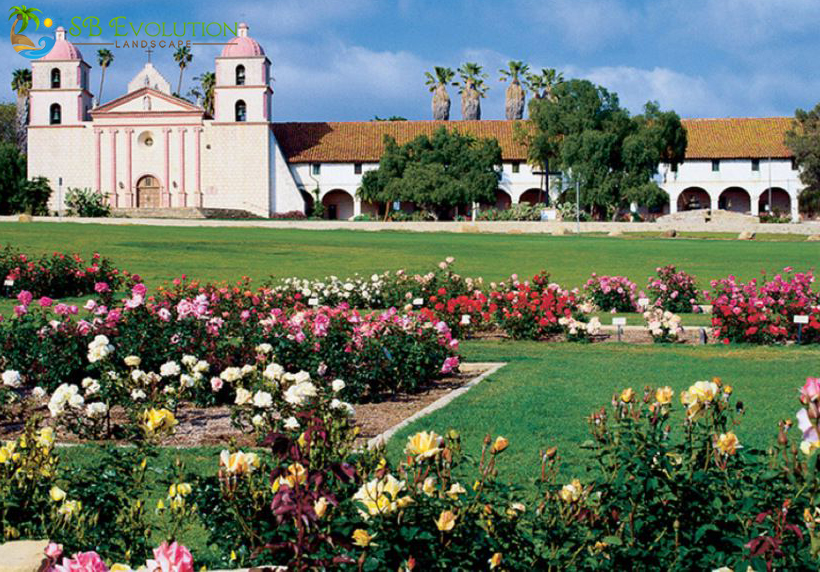
Elements of a well-designed rose garden
Appropriate use of roses in a design is critical to ensuring that each plant stands out on its own, expressing their beauty and role in the garden. Developing a solid plan before installing the garden is likewise an important step in ensuring that the garden will thrive in its microclimate, add interest and valuable aesthetic to the property and home, and respect and reflect the tradition of a typical rose garden. A professional landscape company can help design the a successful rose garden
- Best species for Santa Barbara: Again, rose gardening in the region can be a double-edged sword. However, with proper selection of pest- and disease-resistant varieties, roses in good garden design can thrive well in Southern California. Sticking to easy-to-grow selections, too, can make the enjoyment of a rose garden outweigh its maintenance. Floribunda, carpet, hybrid tea (a classic), and some shrub roses are great selections that provide good visual variety in the garden.
- The layout: Two primary choices for the type of rose garden can help tailor its look to the architecture of the home as well as the personal tastes of the homeowner.
- Traditional/symmetrical: Most people think of a rectangular design when they consider what a rose garden should look like. And that assumption is perfectly valid. A rectilinear garden layout is well organized, manicured, and formal in appearance. Bounded on its edges by some “hardscape” element such as a low wall, fencing, or paving material—all which can reflect and carry out the look of the home—the traditional rose garden is arranged about strong axes with taller material in the corners and pathways that bisect down the middles. Color groupings within the grid are an effective way to strengthen the impact of each rose’s beauty.
- English cottage design: The free spirit of rose garden design, the cottage look is popular in many applications of landscape design and therefore can (and should) incorporate other plant materials that can help enhance the look of roses with complementary colors and contrasting textures. Meandering pathways that wander in and around the plants for maximum enjoyment are further heightened by “surprises” within: a rose bush on a tree standard, a lush impact plant of Santa Barbara, or a climbing rose on ornamental lattice work.
- Room for growth: This point is two-fold: recognizing that roses will grow if they’re happy, the plan should allow ample space to accommodate their mature size. Be prepared, however, to move plants around as they grow into their space, perhaps allowing temporary plants to take residence in between and fill the garden in visually as the roses establish themselves in the garden. And, as the love for rose gardening grows too, so should its space. Future expansion can be considered in a long-term plan for a rose garden.
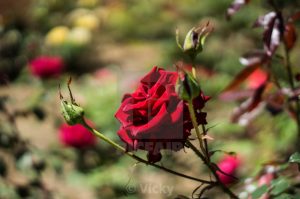
Caring for the rose garden investment
Not only can a Santa Barbara landscape company help design and install the rose garden, their role in the extensive upkeep, outlined above, is critical to its long term care. It can be a daunting process, and one which might deem the assistance of a professional over the long term. SB Evolution is one such company that is expert in the planning and maintenance of a Santa Barbara rose garden. Click “Contact us” to start learning more about rose gardening might be possible at home.



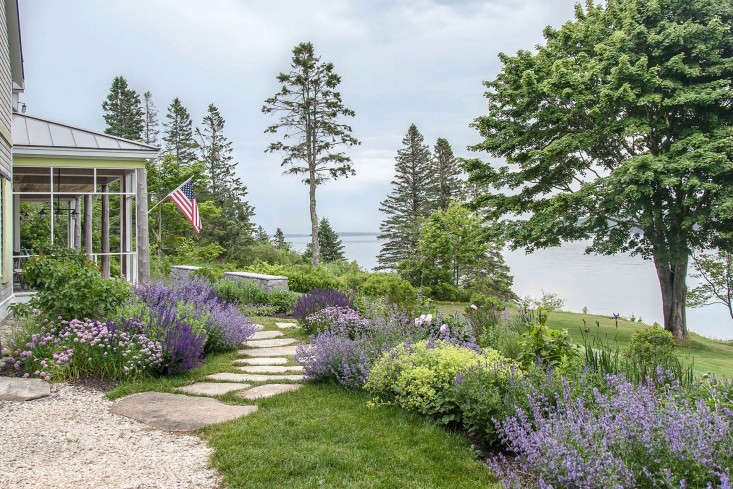
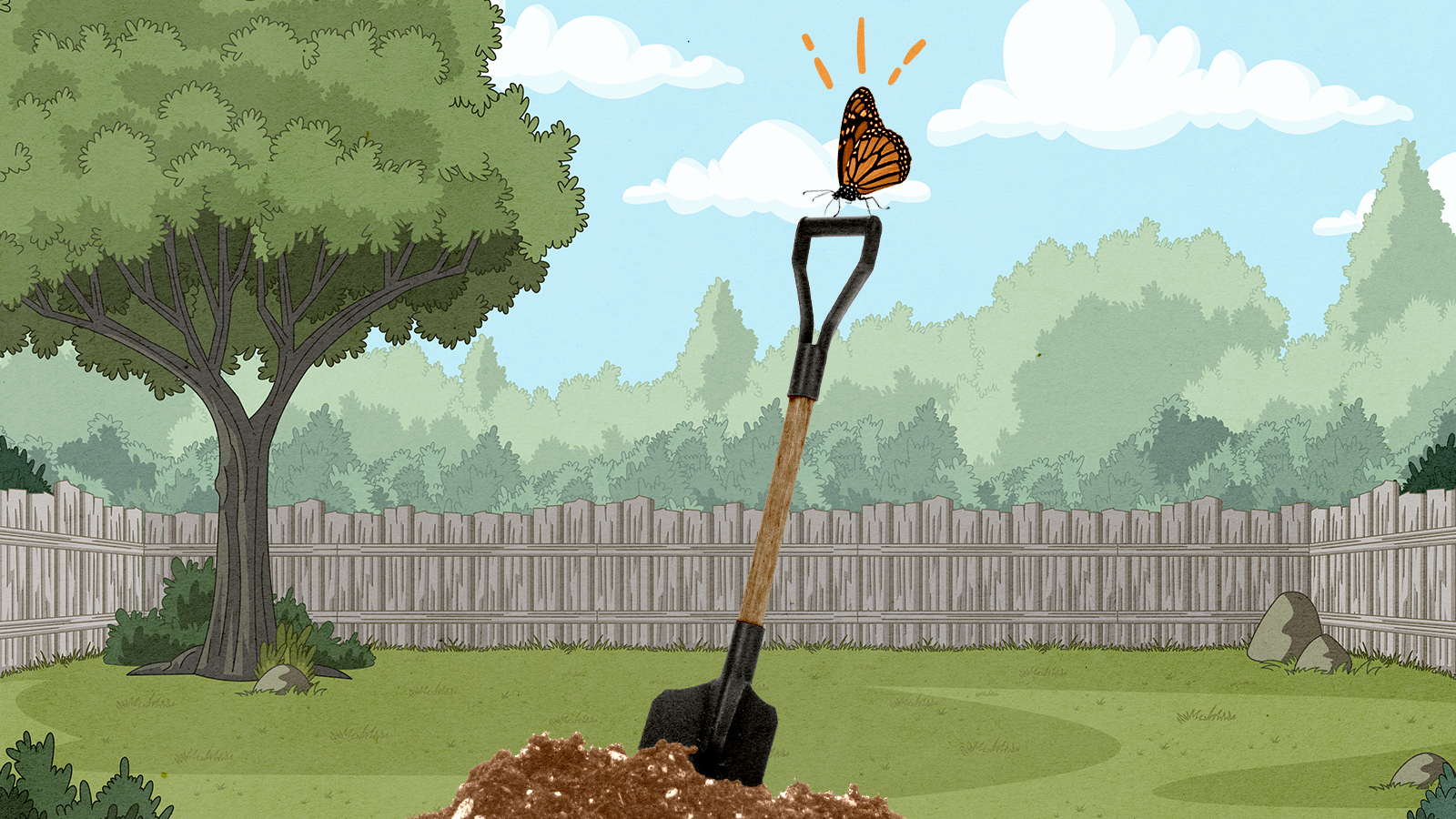
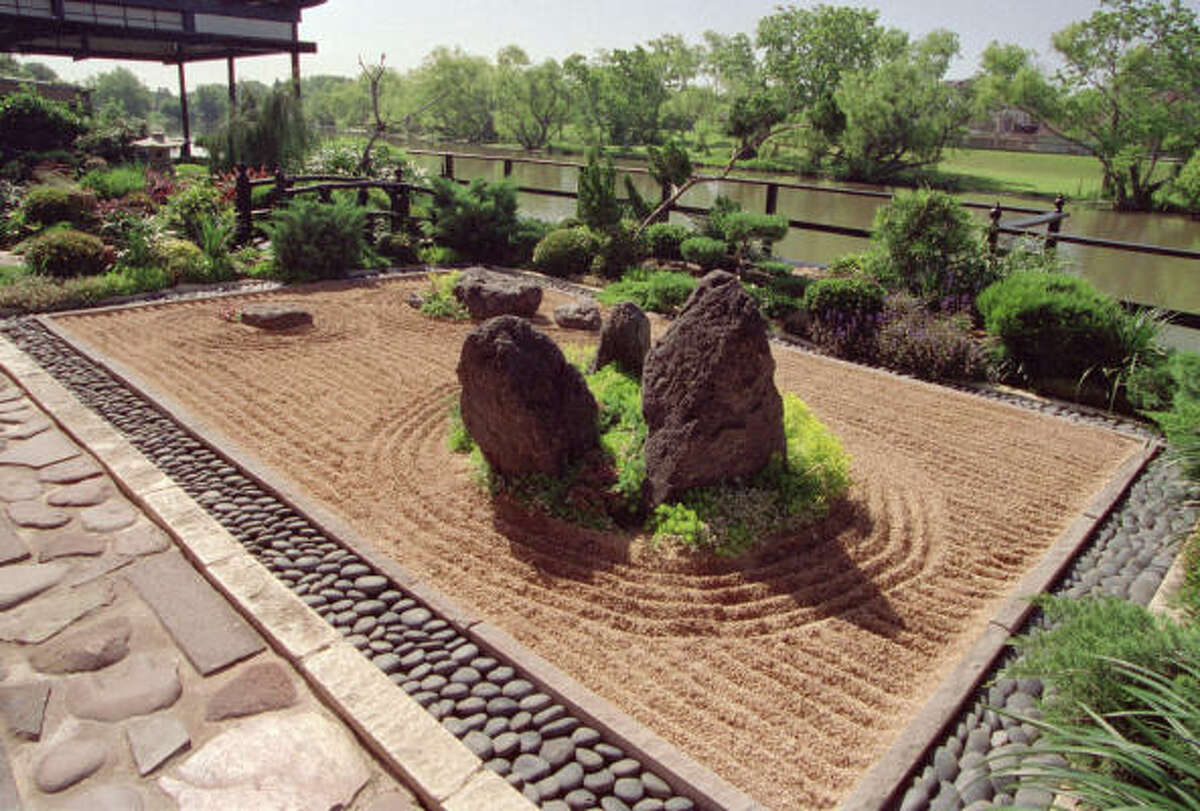

Leave A Comment
You must be logged in to post a comment.